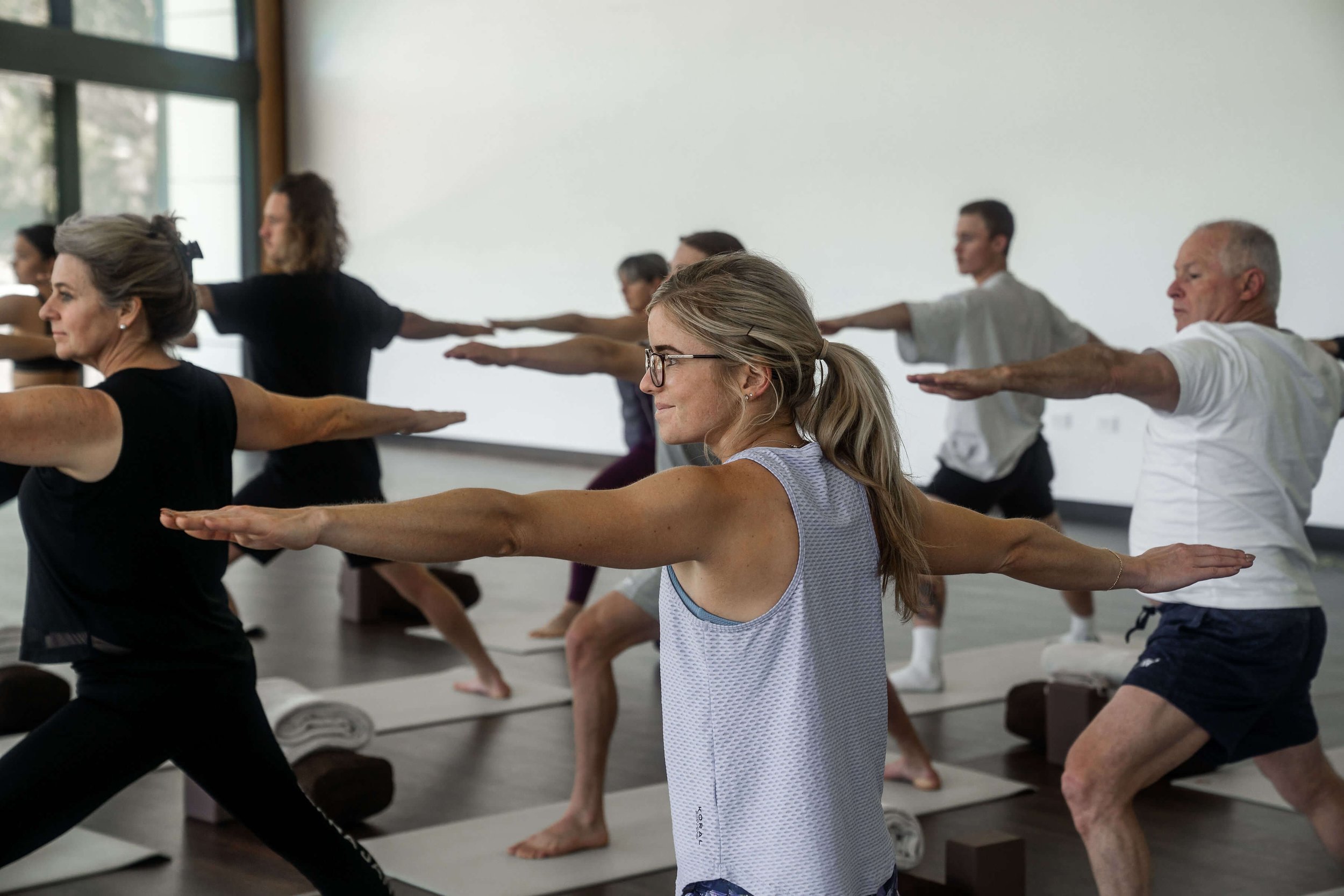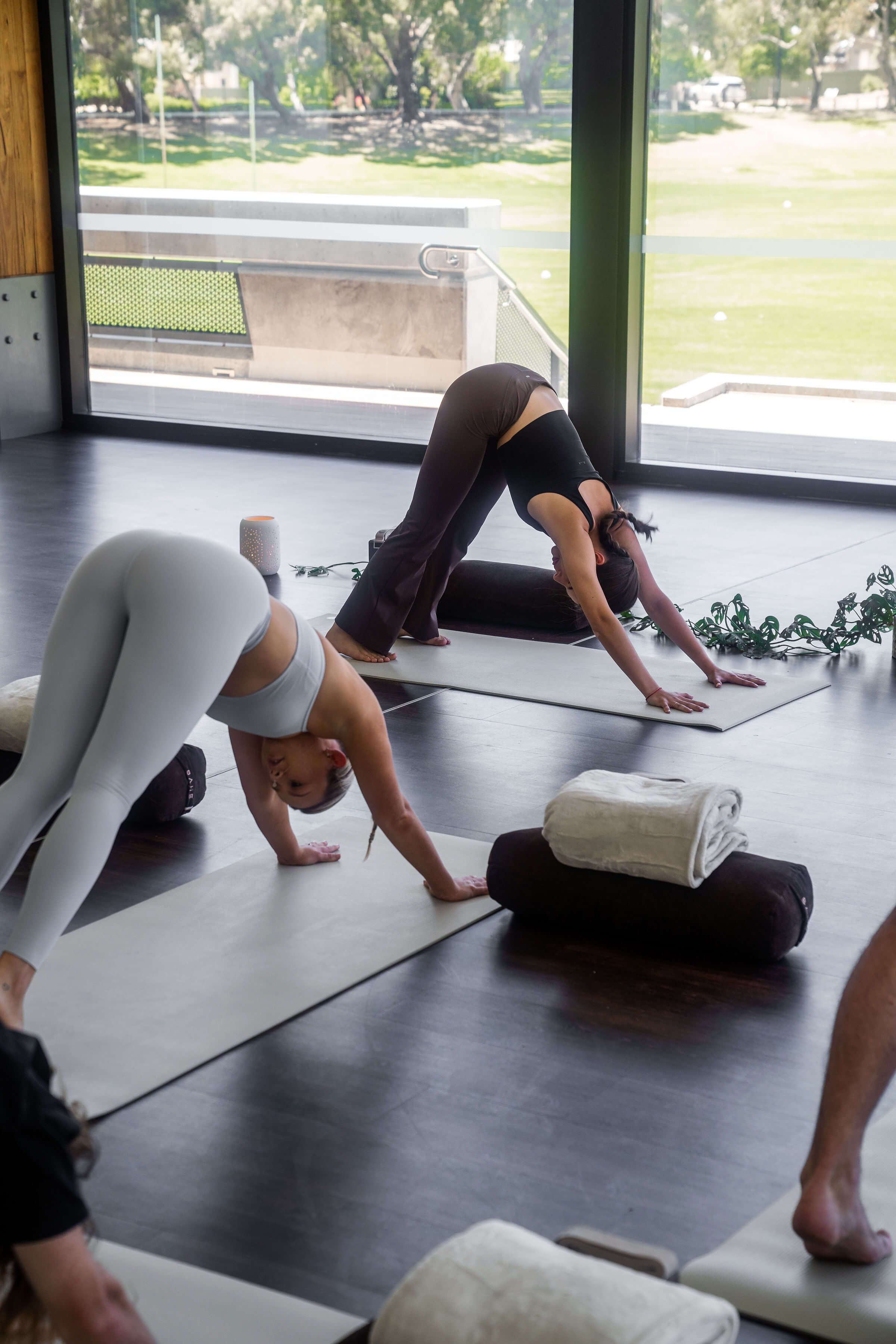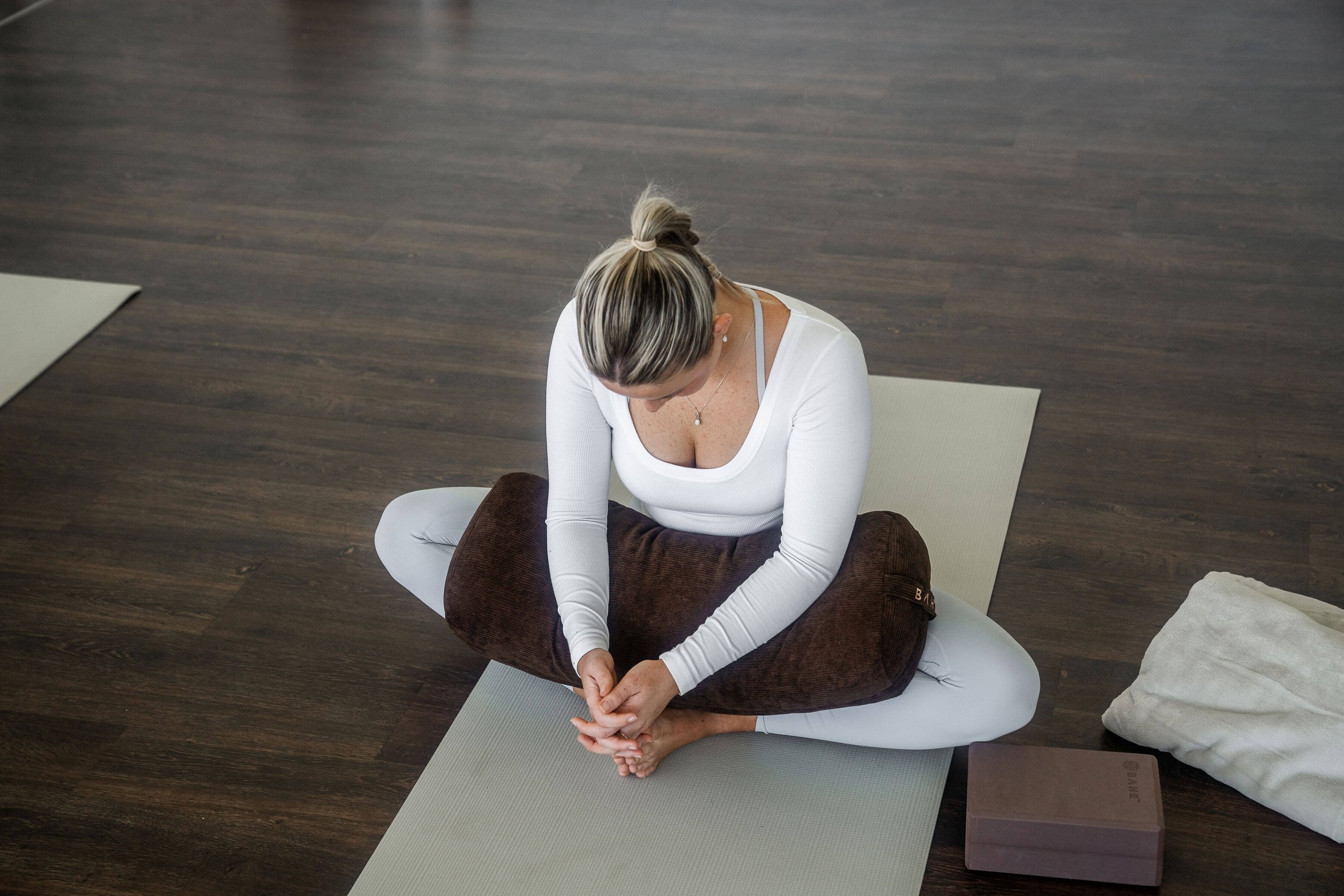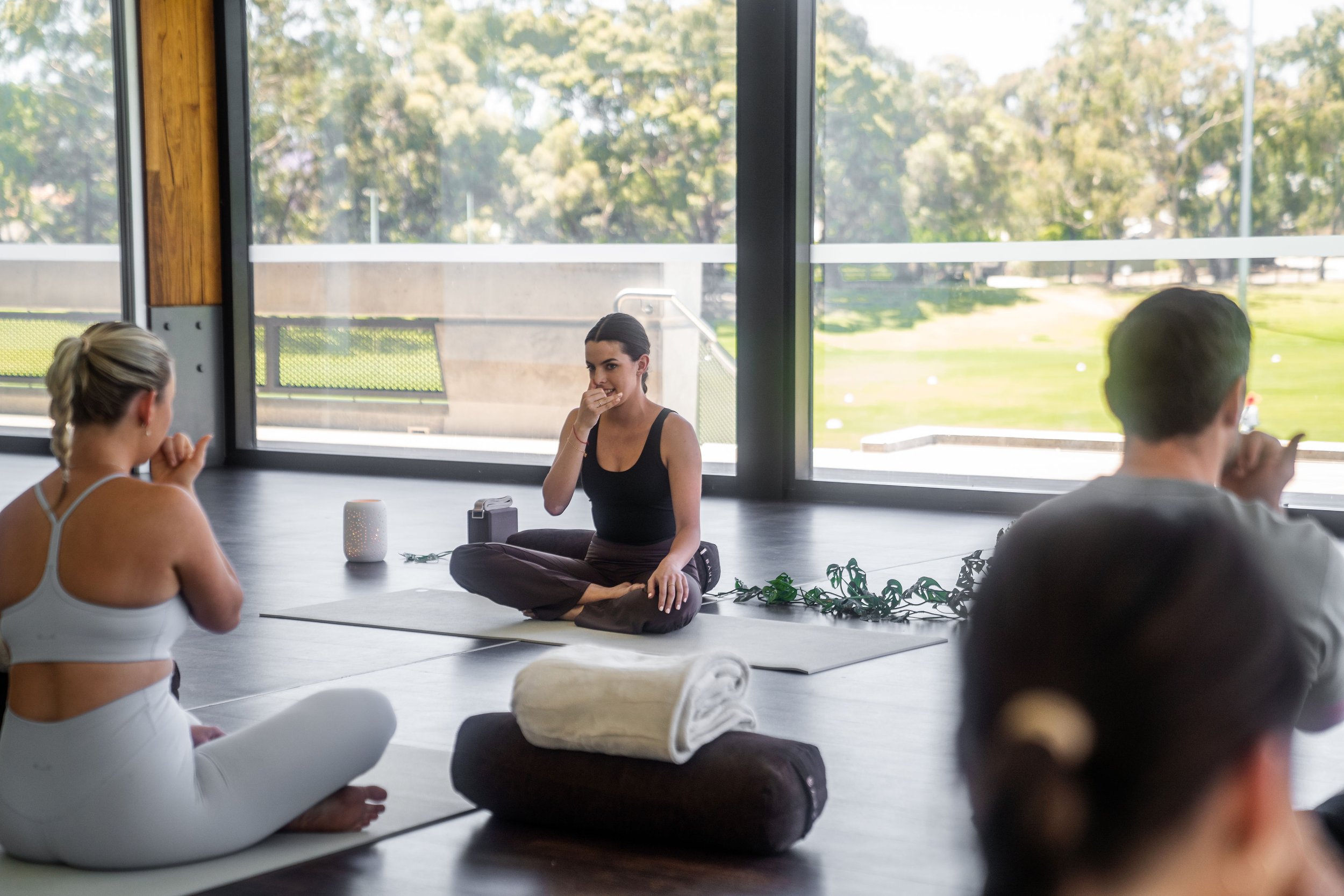
What we offer…
Online Classes
-
What is Yoga?
Yuj or Yoke • Meaning "union"
There are so many different styles of yoga, when we think of it nowadays, we are thinking about yoga āsana or postures.
We are using the physical body to find the state of yoga. The practice assists in bringing the mind into meditation, by using mindful awareness in the shapes.
During our yoga classes, you will be guided through different postures, with multiple options to suit you. We ask that you listen to your body if something doesn't feel right and we welcome you to take your own options if you prefer.
Scroll for our styles of yoga guide!
-
What is Breath Control?
Prāṉāyāma • “Prana” meaning life force or vital energy and “ayama” meaning expansion or control.
Practiced for thousands of years in yogic traditions, pranayama is a type of yoga with a variety of breathing techniques designed to regulate, and cleanse the flow of prana (or energy) in the body and mind.
It is now known that many practices either stimulate or calm the nervous system helping to manage stress, anxiety, and emotions.
Pranayama is often used to prepare the mind for meditation by focusing and reducing mental distractions.
-
What is meditation?
There are many stepping stones to reaching a state of meditation. In yogic tradition you start with Asana (the pose), Pranayama (the breath), Pratyahara (withdrawal of the senses) and Dharana (intense focus), then in time you reach Dhyana, which is known as the state of meditation.
When starting a meditation practice you may feel like you “aren’t doing it right”. Once we try to still the body and the mind, your thoughts will naturally get louder. The first thing is knowing this is okay its normal, try to have an awareness of your thoughts and continue to practice coming back to your breath.
With regular practice it will get easier and feel more natural, although every day is different and some days may be harder.
-
What is Pilates?
The pilates method is a form of low-impact exercise that focuses on the stabilisation and strengthening of the core, posture alignment and spinal articulation, to assist in developing the body in a uniform manner.
Created by Joseph Pilates in the early 20th century, he called the method ‘contrology’, focusing on 6 key principles: Centering, Concentration, Control, Precision, Breath & Flow. He emphasised connecting your breath with slow controlled movements.
The pilates method caters for all bodies, including those injured and needing rehabilitation, hence the popularity with pilates in the physiotherapy world.
-
What is Sound Healing?
Sound healing is a therapeutic practice that uses sound frequencies to promote physical, emotional and spiritual well-being. It is based on the idea that everything in the universe, including the human body, is in a state of vibration.
This practice stimulates the vagus nerve, the main nerves of your parasympathetic nervous system (rest & digest), which innervates most major organs and glands, promoting detoxification and cleansing at a cellular level.
It can be a tool for deepening meditation, spiritual growth and expanding your consciousness. The soothing sounds can help lower stress levels, promote relaxation and improve sleep quality.




Vinyasa Yoga
Vi • Meaning "to place"
Nyasa • Meaning "in a special way”
Vinyasa yoga links movement to your breath, every movement should have an inhale or an exhale through the nose. It is one of the faster-paced styles of yoga. You may also know this type of yoga as "flow" due to the way you transition from one posture to another. Props such as blocks and straps can be used to assist you in the postures. This type of yoga would be considered to be yang, focusing on building stamina, strength and flexibility.
Styles of Yoga
Yin Yoga
Yin yoga is the opposite of Vinyasa, you hold fewer postures for a longer period of time, usually around three to five minutes. Primarily ground-based postures, using props such as bolsters, blocks and blankets to support you. Although this type of practice may seem easier it can be intense depending on how deep you want to go into the shapes. One of the key principles of Yin, is to find an appropriate edge. Once again this is up to you, your time on your mat is your practice, and you can decide what your body needs. Yin comes from Taoist traditions and focuses on finding stillness with no rapid movements and deep stretches targeting your connective tissues.
Restorative Yoga
Restorative Yoga is a deeply calming practice that cultivates weightlessness and relaxation. Unlike Yin Yoga, which also holds postures for long periods, Restorative Yoga fully supports the body in complete ease by using props, allowing poses to be held effortlessly for up to 20 minutes. This gentle approach aligns the body naturally, releasing tension, opening the lungs, and easing the hips and spine, all with minimal muscular engagement. By shifting from “doing” to “being,” Restorative Yoga promotes “active relaxation,” soothing the nervous system and helping to release stress on all levels.
What are the benefits of Yoga?
Which style of yoga is best for me?

